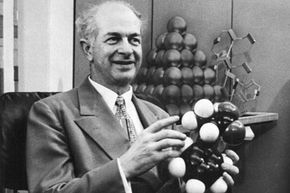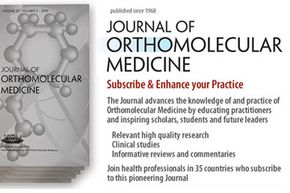What's the first thing you do when you think you might be getting a cold? For many of us, it's popping some vitamin C or drinking it in the form of orange juice, in the hopes that we can stave off the cold or at least reduce its severity. But what if someone -- a double Nobel Prize laureate, perhaps -- told you that taking lots of vitamin C may prevent heart attacks and strokes, or even help to prolong the life of a cancer patient? Taking megadoses of vitamins as a means for preventing or treating illnesses is part of a branch of complementary and alternative medicine (CAM) that you may have never heard of: orthomolecular medicine.
The term "orthomolecular medicine" was coined in 1968 by Dr. Linus Pauling, a chemist and biochemist best known for his work on the nature of chemical bonds and the structure of molecules. "Ortho" is Greek for "right", so Pauling came up with the name to mean "the right substances in the right amounts." Pauling's 1970 book "Vitamin C and the Common Cold' is credited with making it accepted practice to take vitamin C for the common cold. Although Pauling was the first to give it a name, orthomolecular medicine has been around in practice since the 1930s. The basic theory is that some of us have imbalances of one or more substances that we already have in our bodies, such as vitamins, minerals, hormones or amino acids (even if we aren't exhibiting the traditional signs of a deficiency). The imbalance, advocates reason, can lead to illness, so correcting it will prevent or cure the illness.
Advertisement
Orthomolecular medicine is a controversial field; many traditional medical organizations say there's no proof that it works, and it's often been called quackery, fad medicine or even dangerous. Intrigued? Next, we'll delve more into the origins of orthomolecular medicine and what it means to be evaluated by an orthomolecularist.




